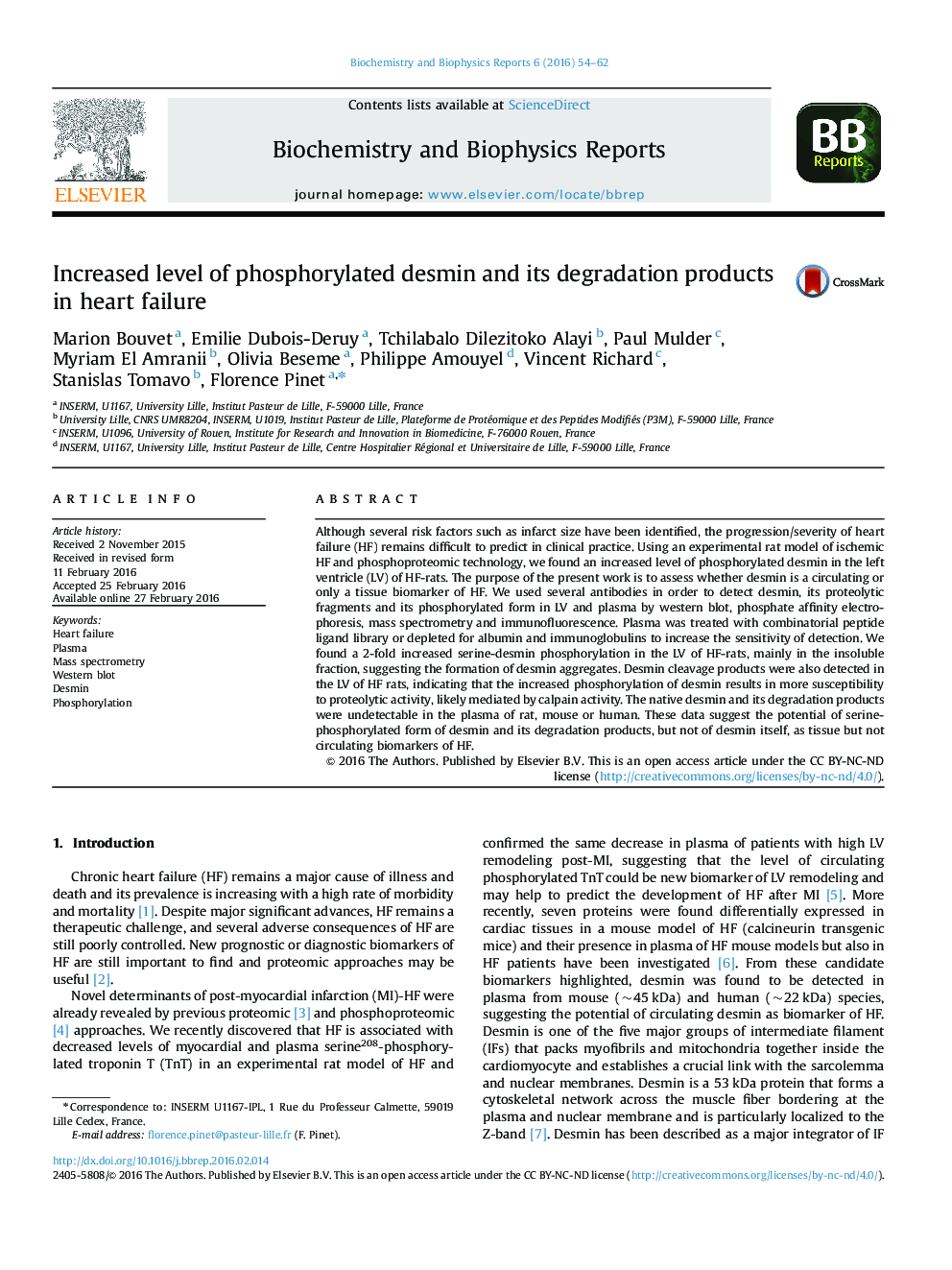| Article ID | Journal | Published Year | Pages | File Type |
|---|---|---|---|---|
| 1941662 | Biochemistry and Biophysics Reports | 2016 | 9 Pages |
Abstract
Although several risk factors such as infarct size have been identified, the progression/severity of heart failure (HF) remains difficult to predict in clinical practice. Using an experimental rat model of ischemic HF and phosphoproteomic technology, we found an increased level of phosphorylated desmin in the left ventricle (LV) of HF-rats. The purpose of the present work is to assess whether desmin is a circulating or only a tissue biomarker of HF. We used several antibodies in order to detect desmin, its proteolytic fragments and its phosphorylated form in LV and plasma by western blot, phosphate affinity electrophoresis, mass spectrometry and immunofluorescence. Plasma was treated with combinatorial peptide ligand library or depleted for albumin and immunoglobulins to increase the sensitivity of detection. We found a 2-fold increased serine-desmin phosphorylation in the LV of HF-rats, mainly in the insoluble fraction, suggesting the formation of desmin aggregates. Desmin cleavage products were also detected in the LV of HF rats, indicating that the increased phosphorylation of desmin results in more susceptibility to proteolytic activity, likely mediated by calpain activity. The native desmin and its degradation products were undetectable in the plasma of rat, mouse or human. These data suggest the potential of serine-phosphorylated form of desmin and its degradation products, but not of desmin itself, as tissue but not circulating biomarkers of HF.
Related Topics
Life Sciences
Biochemistry, Genetics and Molecular Biology
Biochemistry
Authors
Marion Bouvet, Emilie Dubois-Deruy, Tchilabalo Dilezitoko Alayi, Paul Mulder, Myriam El Amranii, Olivia Beseme, Philippe Amouyel, Vincent Richard, Stanislas Tomavo, Florence Pinet,
